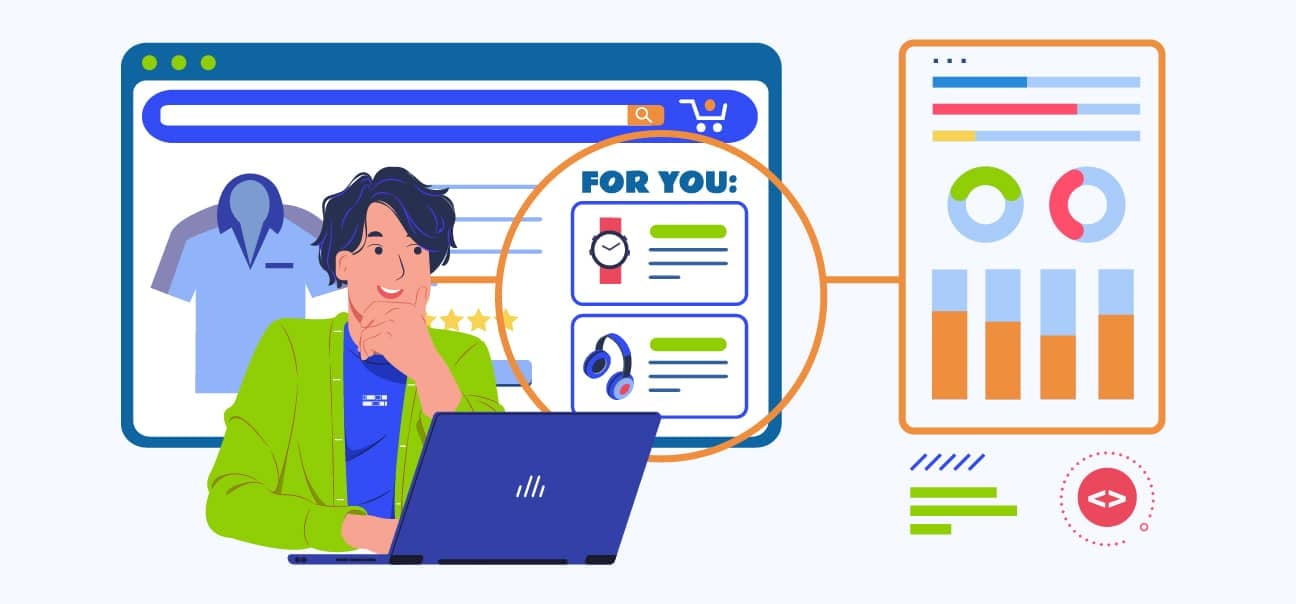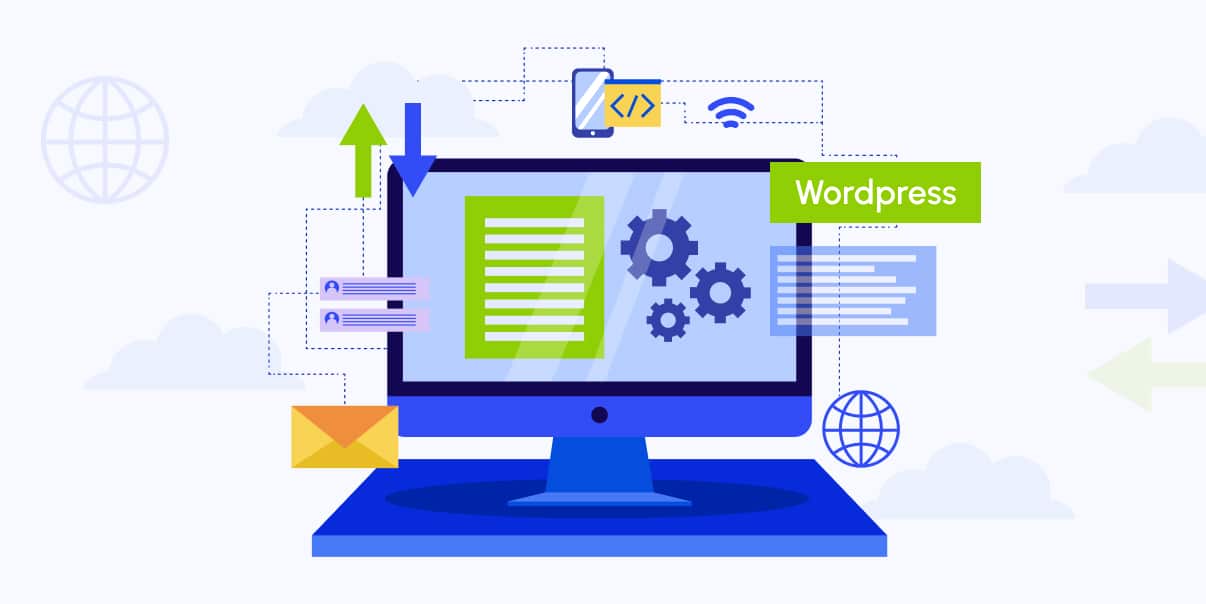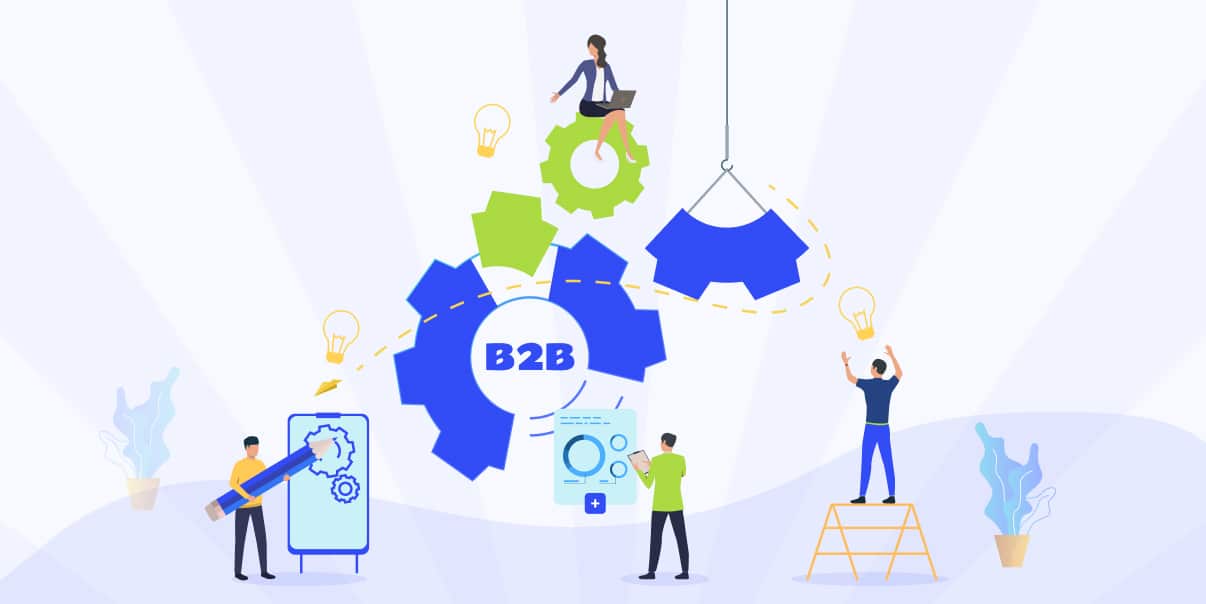The Essential Guide to E-Commerce Recommendation Engines

In the rapidly evolving E-commerce industry, making things personal is very important. Customers want to see products that match their likes and needs. That’s why using a recommendation engine for e-Commerce stores is becoming more popular.
Recommendation engines are smart tools that look at what customers do online, like what they buy or look at, and suggest products they might like. These engines help online shops keep customers interested and returning for more, thus increasing sales.
This article will guide you on different types of recommendation engines in E-commerce development, how to make them work well, what problems they might have, and what’s new and exciting in this area.
Types of Recommendation Engines for E-Commerce
Several types of recommendation engines can help online shops show the right products to their customers. We will discuss three main types: Collaborative Filtering, Content-Based Filtering, and Hybrid Recommendation Systems.
Collaborative Filtering
Collaborative filtering is popular for personalizing recommendations. It looks at the actions of many customers and uses that information to suggest products to other customers. There are two types of collaborative filtering: Item-Item Based Filtering and User-User Based Filtering.
1. User-User Based Filtering
User-User Based Filtering looks at what one customer likes and compares it to others. If two customers want similar things, the system will recommend products one customer bought but the other didn’t.
For example, customers A and B like action movies, and A buys a new action movie B has yet to see. Then, the system will suggest that movie to B.
2. Item-Item Based Filtering
Item-Item Based Filtering focuses on the products instead of the customers. It looks at how items are related based on customer behavior. If customers who buy product A also buy product B, the system will recommend product B to people who bought product A but have yet to buy product B.
For example, suppose customers who purchase a specific brand of shoes also buy matching socks. In that case, the system will suggest those socks to customers who purchased the shoes.
Content-Based Filtering
Content-Based filtering is another method for suggesting products. It looks at a product and recommends similar items based on what a customer liked before. For example, you might need this when a customer buys mystery books. The system will suggest other mystery books with the same themes, authors, or styles to the same customer.
This method uses details about the products, like what kind of item it is, how much it costs, or what it’s about, to find similar things. It doesn’t depend on what customers do as much as collaborative filtering does, so it can work well even if there is little information about what customers like.
Hybrid Recommendation Systems
Hybrid Recommendation Systems mix the best parts of collaborative filtering and content-based filtering. These systems can look at what customers do and what products are like to give relevant suggestions. For example, a hybrid approach might find customers with the same likes using user-user-based filtering. Then, it will use content-based filtering to find products with features those customers enjoy.
Hybrid recommendation systems can give more accurate suggestions and work well even with limited information about customers or products. It makes them a vital tool for online shops that want to make shopping personal for their customers.
Key Components of a Successful Recommendation Engine
Focus on a few essential things to make a recommendation system work well for your online shopping platform. We will discuss data collection and processing, algorithms and machine learning techniques, and evaluation and optimization.
Data Collection and Processing
Collecting the correct data is one of the critical features of a successful recommendation system. You need to get data about what customers do, like buying products or viewing pages. You must also look at customer profiles and product details to ensure the system can suggest the right things.
Once you have all the necessary data, the recommendation system will process it into something that makes sense. It will identify what people buy, look at, or talk about online to suggest the right items.
1. User Behavior Tracking
Tracking User behavior tracking is about watching what customers do on your online store. It can include things like what they buy, what they look at, and how they search for products. Tracking this information can help you learn about your customers’ likes and dislikes. It can help your recommender systems give relevant suggestions to your users.
2. Product Catalog Information
Product catalog information includes details about your products, like their names, descriptions, prices, and categories. This information is vital for content-based filtering. It helps the recommendation engine find relevant products based on their features. The more details you have about your products, the better your recommendation engine can work.
Algorithms and Machine Learning Techniques
Recommendation engines use algorithms and machine learning (ML) techniques to analyze data and make suggestions. Here are some ways your ML can work.
Traditional Methods
Traditional methods offer easy ways to find items that users might like. They use simple math and patterns to make suitable suggestions. Here are the strategies you can try for your online shop:
- Nearest Neighbors. This method is like having a friend who knows your taste. It finds other people with similar likes and suggests items they like too. It’s a simple way to find new stuff you might enjoy.
- Matrix Factorization. Picture a large table with people and items. This method fills in the empty spaces to guess what each person would think of an object. It uses math to make smart guesses.
- Association Rule Mining. This trick looks for patterns in what people buy together. If many people buy peanut butter and jelly, it might suggest jelly to someone who believes it. It’s like the “customers also bought” section in online shops.
- Singular Value Decomposition. This fancy math method makes the big table from Matrix Factorization easier to work with. It helps the computer find patterns in the data even faster.
Topic Modeling
Topic modeling is a way to group items by what they’re about. It makes it easier to find things you’re interested in. One of the most popular modeling techniques is Latent Dirichlet Allocation (LDA).
LDA groups items into topics based on what they’re about. For example, it might put books about cooking and recipes into a “cooking” topic. If you like many cooking books, it can suggest more books on that topic.
Deep Learning-based Techniques
Deep learning techniques are like computer brains learning from lots of data. They’re good at finding patterns and making relevant recommendations. Here are some examples of deep learning techniques.
- Neural Networks. They work like little brains made of computer code. They can learn patterns in the data and make smart suggestions.
- Convolutional Neural Networks (CNNs). These networks understand pictures well. They can look at images of items and recommend similar-looking things.
- Recurrent Neural Networks (RNNs). RNNs can remember things from the past. They’re good at understanding sequences, like the order you view items in, and can use that info to make relevant recommendations.
Evaluation and Optimization
To ensure your recommendation engine is working well, you must test it and make changes if required. The two main ways of doing this are with Offline and Online Evaluation Metrics.
1. Offline Evaluation Metrics
Offline evaluation metrics are ways to test your recommendation engine before customers use it. You can use accuracy, precision, and recall to see how well your engine gives good suggestions. These tests can help you find problems and fix them before your customers see the recommendations.
2. Online Evaluation Metrics
Online evaluation metrics are ways to test your recommendation engine while your customers use it. You can monitor click-through rates, conversion rates, and customer satisfaction to see how your software performs. These tests can help you change your recommendation engine so it keeps improving over time.
Challenges and Solutions in E-Commerce Recommendation Engine Development
Creating a good recommendation engine for your online shopping platform can take time and effort. You may encounter specific difficulties, but there are also potential solutions that you can attempt. In this section, we’ll discuss three main challenges you may encounter.
Cold Start Problem
The Cold Start Problem happens when your recommendation engine doesn’t have enough information about new users or products. It makes it challenging to provide accurate, personalized recommendations.
These strategies can help you deal with this problem:
1. Strategies for New Users
- Ask New Users About Their Interests. When a new customer signs up, you can ask them questions about what they like. It can help your recommendation engine learn more about them quickly.
- Use Popular Items. If you don’t know much about a new user, you can suggest popular items from your store. It can be a safe choice since many people like these things. Upselling and cross-selling techniques can also help you offer items that go with what customers buy.
2. Strategies for New Products
- Use Product Information. Even if many customers have yet to buy or view a new product, you can still use its details (like category, price, or description) to suggest it to people who might like it.
- Promote New Products: You can put new products on your store’s homepage or in special sections, like “New Arrivals.” It can help more customers find and learn about them.
Scalability and Performance
As your online store grows, your recommendation engine needs to be able to handle more customers and products. These can help you make sure your software can scale up and work well:
1. Data Storage Solutions
The correct data storage solution can help your recommendation engine store and access information quickly. Some options include relational databases, NoSQL databases, or cloud-based storage services. Choose the solution that is ideal for your store’s size and needs.
2. Algorithm Optimization Techniques
Some algorithms work better than others for large amounts of data. You can try different algorithms to see which works best for your store. Some examples of these techniques are Matrix Factorization, Nearest Neighbors, and Bracketing Algorithms. You can also look into parallel processing or data sampling techniques to speed up your engine’s calculations.
Privacy and Security Concerns
When you collect and use customer data, it’s vital to protect their privacy and follow the rules. Here are some ways to do that:
1. Data Anonymization Techniques
Data anonymization means changing customer data so no one can connect it to a specific person. You can use techniques like data masking or generalization to ensure your recommendation engine can still use the information without risking people’s privacy.
2. GDPR Compliance
The General Data Protection Regulation (GDPR) is a set of rules that protect people’s data in the European Union. If you are targeting European customers, you need to follow these rules. Some steps you can take include telling customers what data you collect, asking for their permission, and keeping their data safe.
Addressing these challenges can make your e-commerce recommendation engine more successful. It will offer your customers a better shopping experience and grow your online store.
Implementation of Recommendation System in E-Commerce Platforms
Now, you know the challenges in building a recommendation engine and how to solve them. Let’s discuss how to put one in your online store. We’ll look at popular e-commerce platforms, integrating recommendation engines and customizing them to fit your needs.
Popular E-Commerce Platforms
Many online stores use e-commerce platforms like Shopify and Magento. These platforms often have built-in recommendation features you can use.
1. Shopify
Shopify has a built-in recommendation engine that shows related products based on customers’ browsing history. It also offers tools to analyze the average order value of your shop. You can also find many apps in the Shopify App Store that offer more advanced recommendation features.
2. Magento
Magento offers built-in features like related products, up-sells, and cross-sells. You can also use extensions from the Magento Marketplace to add more powerful recommendation engines to your store.
Integrating Recommendation Engines
The built-in recommendation features of your e-commerce platform may not meet your needs. In that case, you can consider other ways to integrate a recommender system into your store. Here are some ways to incorporate a recommender system into your online store.
1. Custom Development
You can work with a developer to create a recommendation engine for your store. It gives you complete control over its features and how it works. However, constructing it may require more funds and a lengthier timeline.
2. Third-Party Recommendation Services
You can use a service specializing in recommendation engines, like Recombee or Dynamic Yield. These services offer pre-built software you can easily add to your store. They often come with more features and better performance than built-in options, but they can cost more.
Customizing and Extending Built-in Features
If your e-commerce platform already has recommendation features, you can customize and scale them to fit your store better. Change how you show your products, use different algorithms, or add new features like personalization. Work with a developer or use extensions from your platform’s marketplace to make these changes.
Custom Development and Deployment of Recommendation Engines
You can collaborate with a developer or development company to build a custom recommendation engine. They will help you create and add reliable software to your e-commerce platform. They’ll help you choose suitable algorithms, data storage solutions, and evaluation methods for your store. They’ll also make sure your engine is scalable and follows privacy rules.
Here’s how you can find a reliable development company:
1. Research and Comparison
Look for development companies online and compare their services, prices, and portfolio of projects. Check out customer reviews to ensure they’re reliable and have experience with e-commerce stores like yours.
2. Ask Around
Talk to other store owners or friends who know about web development. They can give you recommendations and advice on which company to choose.
3. Test Their Skills
Before you hire a development company, ask them to do a short project for free. It will help you see if they’re the right fit for your store and what kind of work they can do.
Future Trends and Innovations in E-Commerce Recommendation Engines
E-commerce is constantly changing, and recommendation engines are no exception. Let’s look at three exciting trends that could shape the future of these helpful tools.
AI and Deep Learning Technologies
Artificial Intelligence (AI) and Deep Learning are getting better every day. These technologies can help recommendation engines understand customers’ likes and dislikes more accurately. We might see software to learn from customer behavior faster and make better suggestions for products they’ll love.
Increasing the Use of Real-time Recommendations
Right now, many recommendation engines update their suggestions once a day or even less often. But in the future, we could see more software that works in real-time. It means they’ll update their recommendations every time a customer clicks on a product, adds something to their cart, or purchases. Real-time recommendations can help stores react quickly to customers’ changing interests and show them the perfect products at the right time.
Integration of Recommendation Engines in Augmented Reality and Virtual Reality
Augmented Reality (AR) and Virtual Reality (VR) are changing how people shop online. These technologies let customers see products in 3D, try them on virtually, or even walk through virtual stores. As AR and VR become more popular, we might see recommendation engines that work with these technologies.
For example, a recommendation engine could suggest items that go well with the clothes a customer is virtually trying. It could also show them similar products in a virtual store aisle.
These trends show that e-commerce recommendation engines have an exciting future. By staying up-to-date with these innovations, you can ensure your e-Commerce continues offering your customers a personalized shopping experience.
Conclusion
Embracing recommendation engines is essential for e-commerce success, as they help create personalized shopping experiences for your customers. To stay competitive and grow your e-Commerce store, consider implementing and optimizing a recommendation engine that suits your needs. If you need help building a recommendation engine for e-Commerce, work with a reliable development company like BIT Studios. Our industry experts can help you customize and deploy software that works for your store.
We’re BIT Studios!
At BIT Studios we specialize in designing, building, shipping, and scaling beautiful, usable products with blazing-fast efficiency



